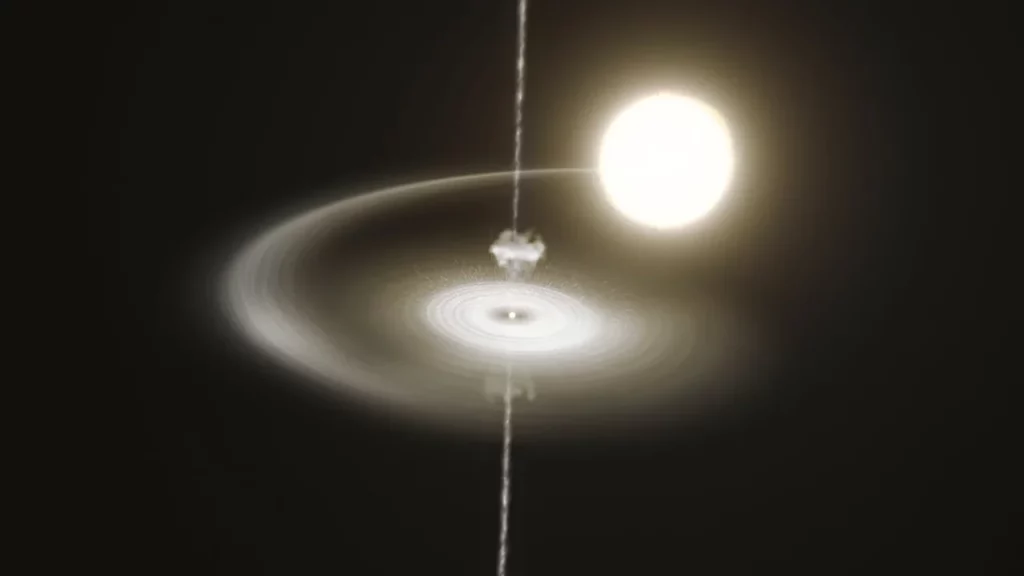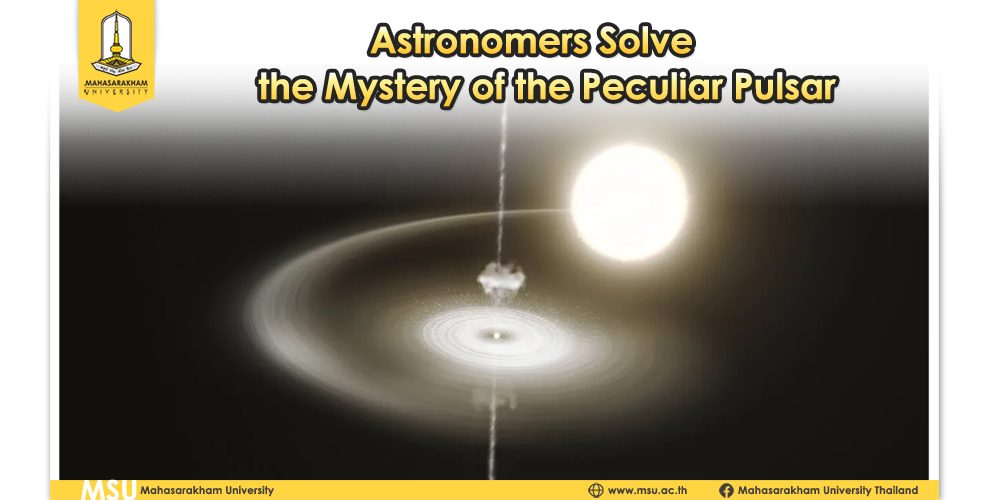Astronomers Solve the Mystery of the Peculiar Pulsar
A team of international astronomers have finally solved the mystery behind a pulsar, named PSR J1023+0038 or J1023 for short, which has puzzled them for years. Pulsars are rapidly rotating, highly magnetized, dead stars which are so named because they release beams of electromagnetic radiation which from our perspective appear in pulses, like cosmic lighthouses. They are a type of neutron star that is formed when massive stars run out of fuel and eventually collapse.
The pulsar in question, located approximately 4,500 light-years away in the Sextans constellation with a companion star that it closely orbits, was discovered in 2007 and is particularly unusual as it constantly switches between two modes of brightness. In its “high” mode J1023 emits X-rays, ultraviolet light and visible light, whereas in its “low” mode it becomes dimmer, emitting more radio waves instead.
Observations made by the European Southern Observatory (ESO) have determined that this peculiar behavior is due to sudden ejections of matter over short time spans. Francesco Coti Zelati, Ph.D., observational astrophysicist at the Institute of Space Sciences in Barcelona, stated that “We have discovered that the mode switching stems from an intricate interplay between the pulsar wind, a flow of high-energy particles blowing away from the pulsar, and matter flowing towards the pulsar”. J1023 has been pulling matter off its companion star which accumulates into a surrounding disc and then slowly falls into the dead star. In its “low” mode matter is expelled in a narrow jet perpendicular to the disc. This occurs closer and closer to the pulsar until the matter is eventually hit by a pulsar wind that causes it to heat up. This rapid rise in temperature triggers a shift to the pulsar’s “high” mode where it rapidly expels hot matter. Once hot matter has been expelled J1023 shifts back to its “low” mode and the cycle begins again. This unusual pulsar stays in each of these modes for a period of mere seconds or minutes before quickly switching.
ESO’s Extremely Large Telescope, or ELT, currently under construction in Chile is expected shine some more light onto exactly how and why this unusual behavior occurs when observations begin in 2028. “The ELT will allow us to gain key insights into how the abundance, distribution, dynamics, and energetics of the inflowing matter around the pulsar are affected by the mode switching behavior.” said Sergio Campana, Ph.D., co-author of the study which has since been published in the journal Astronomy & Astrophysics.




Leave a Reply